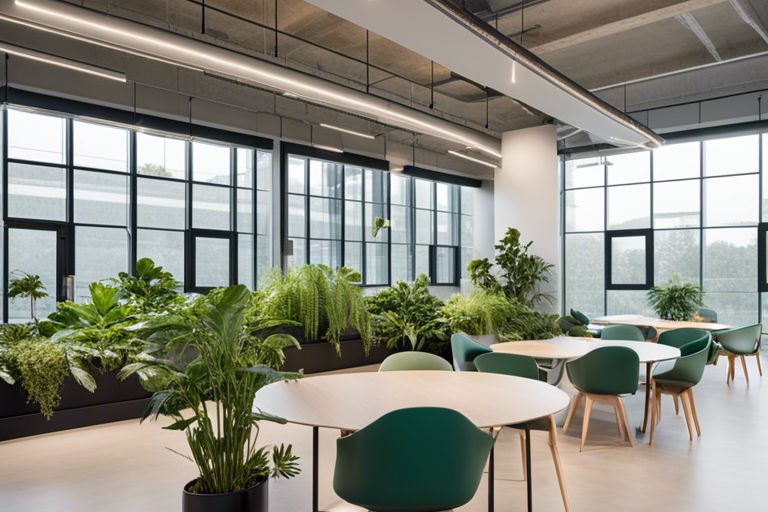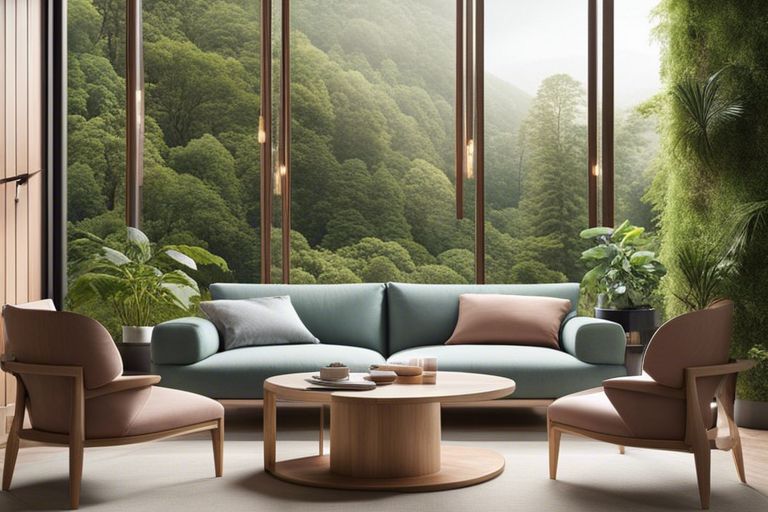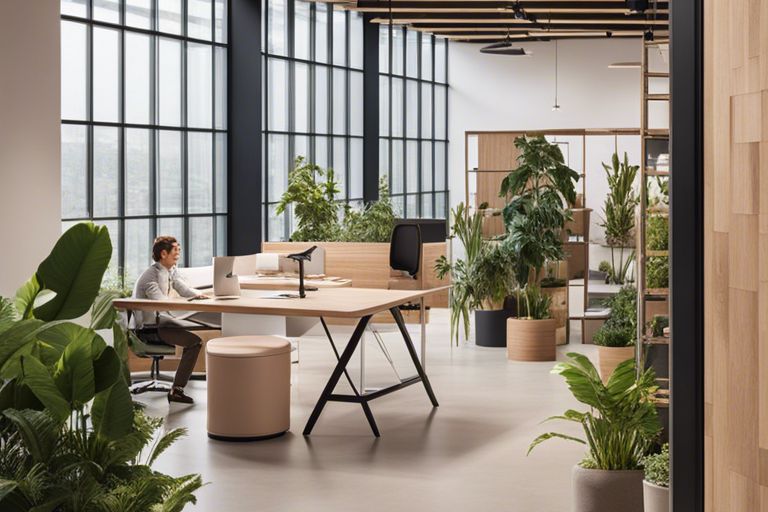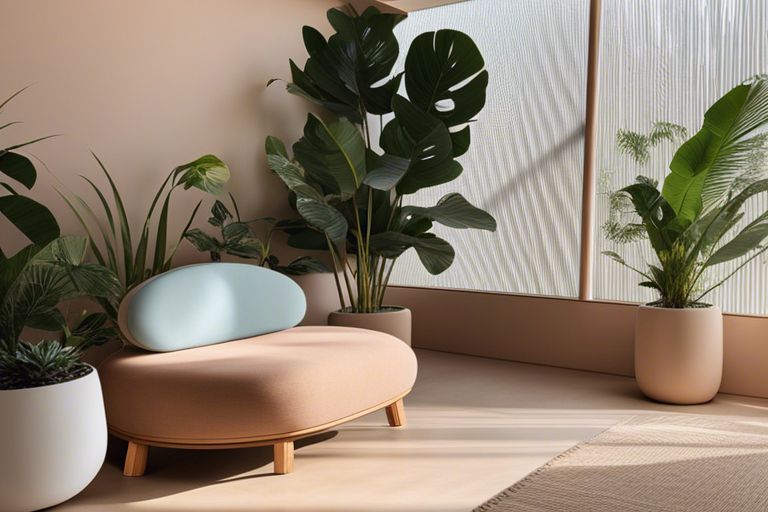With nature-inspired elements integrated into your living and working spaces, biophilic design can have a profound impact on your overall well-being. From reduced stress levels and improved mood to increased productivity and creativity, the benefits of connecting with nature indoors are numerous. By incorporating natural light, greenery, and natural materials, you can create a healthier and more harmonious environment that supports your mental, emotional, and physical health. Discover how embracing biophilic design can transform your everyday life for the better.
Key Takeaways:
- Connection with nature: Biophilic design aims to incorporate elements of nature into indoor spaces, which can help reduce stress, improve mood, and increase productivity.
- Improved air quality: By including natural elements like plants and natural light, biophilic design can help enhance indoor air quality, leading to better respiratory health and overall well-being.
- Promotes relaxation and creativity: Being surrounded by nature-inspired design can create a calming atmosphere, stimulate creativity, and promote a sense of well-being in occupants.
The Science Behind Biophilia
While biophilic design may seem like a modern concept, the idea behind it is deeply rooted in our evolutionary history. The term ‘biophilia’ was first introduced by psychologist Erich Fromm in the 1960s, but it was popularized by biologist Edward O. Wilson in the 1980s. The theory suggests that humans have an innate connection to nature due to our evolutionary need to be in natural environments. This connection to nature is believed to have a profound impact on your mental, emotional, and physical well-being.
The Human Connection to Nature
The bond between humans and nature is evident in the relaxation you feel when you are immersed in a natural setting, such as a forest or a beach. Your brain responds positively to natural elements such as sunlight, greenery, and fresh air, which can reduce stress, improve mood, and enhance your overall well-being.
The Impact of Urbanization on Mental Health
Urbanization has led to a significant disconnect between humans and nature. As you spend more time in urban environments filled with artificial stimuli, your mental health may suffer. Research has shown that living in cities can increase your risk of developing anxiety, depression, and other mental health disorders. The constant exposure to noise, pollution, and crowds can overwhelm your senses and negatively impact your well-being.
Behind this phenomenon is the idea that your brain is not designed to handle the constant bombardment of urban stimuli, which can lead to mental fatigue and cognitive overload. By integrating elements of nature into urban environments through biophilic design, you can create spaces that promote your mental health and well-being.
Biophilic Design Principles
The Biophilic Design and Its Effects on Human Health and Wellbeing explains the principles behind biophilic design. These principles focus on incorporating elements of nature into indoor spaces to improve overall well-being and connection to the environment.
Natural Light and Ventilation
Any space designed with biophilic principles will prioritize natural light and ventilation. Exposure to natural light has been linked to improved mood, productivity, and sleep. Proper ventilation not only improves air quality but also creates a connection to the outdoors.
Incorporating Plants and Greenery
With a focus on incorporating plants and greenery, biophilic design brings nature indoors. Plants have been shown to reduce stress, increase productivity, and purify the air. By adding green elements to your space, you can create a sense of calm and rejuvenation.
The
Water Features and Acoustics
The incorporation of water features and attention to acoustics are vital in biophilic design. Water features can provide a sense of tranquility and promote relaxation. Paying attention to acoustics, such as using natural materials to absorb sound, can create a more peaceful and harmonious environment in your space.
For instance, adding a small indoor fountain can introduce the soothing sounds of flowing water, while incorporating natural materials like wood and stone can help create a more serene atmosphere. These elements all work together to enhance your well-being and create a more connected and harmonious living or working environment.
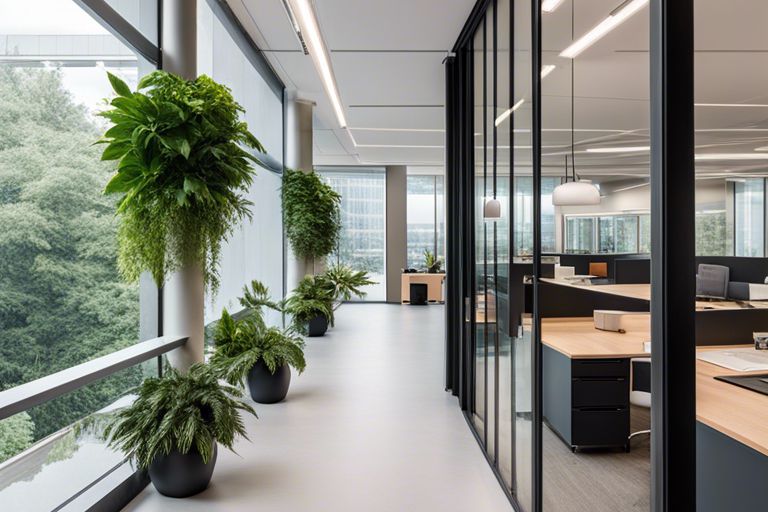
Physical Health Benefits
Reduced Stress and Anxiety
To reduce stress and anxiety, biophilic design incorporates elements such as natural light, plants, and views of nature. These features have been shown to have a calming effect on the mind and body, helping you feel more relaxed and at ease in your environment. By introducing these natural elements into your living or working space, you can create a more soothing atmosphere that promotes overall well-being.
Improved Air Quality and Immune Function
Functioning as a form of green infrastructure, biophilic design can help improve air quality and enhance immune function. Natural elements like plants not only purify the air by removing toxins but also release oxygen, creating a healthier indoor environment for you. This cleaner air can lead to better respiratory health and a stronger immune system, reducing your risk of illnesses and allergies.
Understanding the importance of indoor air quality is crucial for your well-being. Poor air quality can lead to various health issues, including respiratory problems, headaches, and fatigue. By incorporating biophilic design principles into your spaces, you can create healthier environments that support your physical health and overall wellness.
Enhanced Cognitive Function
For enhanced cognitive function, biophilic design can help improve your focus, creativity, and productivity. Exposure to natural elements has been linked to better concentration and mental clarity, allowing you to perform tasks more efficiently and effectively. By incorporating nature-inspired elements into your surroundings, you can create a more stimulating environment that supports your cognitive abilities.
Functioning as a form of cognitive enhancement, biophilic design can have a significant impact on your mental well-being. By surrounding yourself with natural elements, you can experience improved memory, problem-solving skills, and overall cognitive performance. This can lead to a more productive and fulfilling life, where you can thrive both personally and professionally.
Mental and Emotional Well-being
Mood Enhancement and Reduced Depression
For reduced depression and enhanced mood, biophilic design elements such as natural light, greenery, and natural materials can work wonders. Studies have shown that being surrounded by nature or natural elements can help decrease stress levels, improve mood, and reduce symptoms of depression. By incorporating these elements into your living or working space, you can create a calming and rejuvenating environment that promotes mental well-being.
Increased Productivity and Focus
The connection between nature and increased productivity is remarkable. By bringing elements of nature indoors, such as incorporating natural textures, patterns, and views of nature, you can enhance your focus and cognitive functions. Research indicates that exposure to natural elements can improve concentration, creativity, and problem-solving skills. Implementing biophilic design in your workspace can help you stay more engaged, productive, and inspired.
Moreover, having access to views of nature or natural elements can provide mental breaks that stimulate your brain and prevent mental fatigue, allowing you to maintain high levels of productivity throughout the day.
Better Sleep Quality
With biophilic design, you can significantly improve your sleep quality. Biophilic elements such as organic shapes, natural materials, and calming color schemes can create a relaxing environment that promotes restful sleep. Studies have shown that exposure to natural elements can regulate your circadian rhythm, reduce insomnia, and improve overall sleep quality. By incorporating biophilic design principles into your bedroom, you can create a tranquil retreat that enhances your sleep hygiene.
This approach not only helps you fall asleep faster and enjoy deeper sleep but also allows you to wake up feeling refreshed and rejuvenated, ready to tackle the day ahead.
Biophilic Design in Practice
Once again, let’s explore how biophilic design can be incorporated into different spaces to enhance your well-being.
Residential Spaces: Bringing Nature Indoors
Design your home to incorporate natural elements such as indoor plants, natural light, and natural materials like wood and stone. These elements can help reduce stress, improve cognitive function, and enhance your overall well-being. Consider creating a green oasis in your living room or bedroom with a variety of plants to boost air quality and bring a sense of calm.
Commercial Spaces: Boosting Employee Well-being
On a larger scale, businesses can utilize biophilic design to create work environments that promote productivity, creativity, and employee satisfaction. Incorporating elements such as green walls, indoor gardens, and views of nature can help reduce absenteeism, improve job performance, and boost employee morale.
Wellbeing in the workplace is crucial for employee retention and overall success. By integrating biophilic design principles, companies can show they prioritize their employees’ well-being, leading to a more positive and productive work environment.
Public Spaces: Community Engagement and Social Connection
Boosting community well-being is important in public spaces such as parks, plazas, and community centers. By incorporating biophilic design elements like natural landscaping, water features, and recreational areas, these spaces can promote social interactions, improve mental health, and strengthen community ties. Spending time in these environments can help reduce feelings of isolation and increase a sense of belonging.
Bringing nature into public spaces not only enhances aesthetics but also creates opportunities for people to connect with each other and the environment. Whether it’s a green rooftop garden or a natural playground, these spaces can foster a sense of unity and well-being among community members.
Challenges and Limitations
Despite the numerous benefits of biophilic design, there are several challenges and limitations that need to be considered when implementing this approach in architecture and interior design projects. One of the primary challenges is
Balancing Aesthetics and Functionality
.
An crucial aspect of biophilic design is creating spaces that are not only visually appealing but also functional and practical for everyday use. Striking the right balance between aesthetics inspired by nature and the functionality required for a space can be a delicate task. While incorporating natural elements such as plants and natural light can enhance the overall well-being of occupants, it is crucial to ensure that these elements do not impede the functionality of the space.
Addressing Accessibility and Inclusivity
Limitations in biophilic design also extend to the challenge of ensuring accessibility and inclusivity for all individuals. While biophilic design aims to reconnect people with nature, it is crucial to consider the diverse needs of individuals, including those with disabilities. Designing spaces that are biophilic and also accessible to everyone can be a complex task.
Overcoming Budget Constraints
An obstacle that often arises when incorporating biophilic design principles is budget constraints. Integrating natural elements and sustainable materials into a design can be more costly than traditional methods. However, the long-term benefits of biophilic design in terms of improved well-being and productivity can outweigh the initial costs.
Addressing Overcoming Budget Constraints
To overcome budget constraints, you can consider prioritizing key biophilic design elements that align with your values and goals. Another approach is to research cost-effective ways to incorporate nature-inspired elements, such as using reclaimed wood or introducing natural light through strategic window placement.
Conclusion
Drawing together the various ways in which biophilic design can enhance your well-being, it is evident that incorporating natural elements into your living or workspace can have profound effects on your overall health and happiness. By connecting with nature through elements like natural light, vegetation, and natural materials, you can create a more calming and productive environment that nurtures your physical and mental well-being.
With the numerous benefits that biophilic design offers, from reducing stress and improving cognitive function to increasing creativity and productivity, it’s worth considering how you can incorporate more natural elements into your surroundings. Whether through adding plants, natural textures, or creating views of nature, enhancing your space with biophilic design can help you feel more connected to the natural world and ultimately improve your quality of life.
FAQ
Q: What is biophilic design?
A: Biophilic design is an innovative approach to architecture and interior design that incorporates elements of nature to create a more harmonious and human-centered environment.
Q: How can biophilic design enhance your well-being?
A: Biophilic design has been proven to reduce stress, improve cognitive function, increase productivity, enhance creativity, and promote overall well-being by connecting people to nature within their built environments.
Q: What are some examples of biophilic design elements?
A: Examples of biophilic design elements include natural light, indoor plants, water features, natural materials such as wood and stone, views of nature, and green walls or living facades. These elements help to create spaces that are more calming, inspiring, and conducive to human health and happiness.
